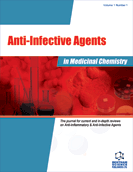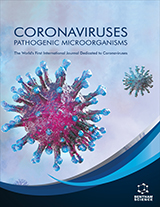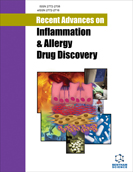Abstract
Serious attempts to address antibiotic resistance, a worldwide public health concern, have recently become more intensive. In hospital settings, resistance to antibacterial agents has been recognized by clinicians for several decades. Resistant strains are now isolated on a daily basis from patients with community-acquired infections further elevating the level of concern among public health officials. The pharmaceutical industry has generally focused its attentions on chronic therapeutic indications in recent years (e.g. cardiovascular and metabolic diseases), but will likely be forced to reengage in antibacterial discovery efforts as therapeutic options diminish for the treatment of infections caused by multidrug resistant pathogens. The ability to squeeze additional utility out of known classes of antibacterial agents has become limited and antibacterial discovery scientists will need to focus on new approaches and targets. These new approaches will need to include strategies that explicitly address resistance up front and simultaneously attempt to facilitate the slower development of resistance as new compound classes enter clinical use. One approach that can be a useful component of antibacterial discovery efforts and prospectively address resistance is structure-guided design (SGD). This review will describe several recent examples in which SGD was applied as part of a multidisciplinary effort to address antibacterial resistance. These include dihydrofolate reductase inhibitors, broad-spectrum β-lactamase inhibitors, novel oxazolidinones, aminoglycoside mimetics, peptide deformylase inhibitors, and inhibitors that simultaneously target DNA gyrase and topoisomerase IV.
Keywords: Antibiotic resistance, antibiotic drug discovery, resistance mechanisms, structure-guided design, dual targeting
Anti-Infective Agents in Medicinal Chemistry
Title: The Use of Structure-Guided Design to Discover New Anti-Microbial Agents: Focus on Antibacterial Resistance
Volume: 8 Issue: 1
Author(s): P. S. Charifson, T. H. Grossman and P. Mueller
Affiliation:
Keywords: Antibiotic resistance, antibiotic drug discovery, resistance mechanisms, structure-guided design, dual targeting
Abstract: Serious attempts to address antibiotic resistance, a worldwide public health concern, have recently become more intensive. In hospital settings, resistance to antibacterial agents has been recognized by clinicians for several decades. Resistant strains are now isolated on a daily basis from patients with community-acquired infections further elevating the level of concern among public health officials. The pharmaceutical industry has generally focused its attentions on chronic therapeutic indications in recent years (e.g. cardiovascular and metabolic diseases), but will likely be forced to reengage in antibacterial discovery efforts as therapeutic options diminish for the treatment of infections caused by multidrug resistant pathogens. The ability to squeeze additional utility out of known classes of antibacterial agents has become limited and antibacterial discovery scientists will need to focus on new approaches and targets. These new approaches will need to include strategies that explicitly address resistance up front and simultaneously attempt to facilitate the slower development of resistance as new compound classes enter clinical use. One approach that can be a useful component of antibacterial discovery efforts and prospectively address resistance is structure-guided design (SGD). This review will describe several recent examples in which SGD was applied as part of a multidisciplinary effort to address antibacterial resistance. These include dihydrofolate reductase inhibitors, broad-spectrum β-lactamase inhibitors, novel oxazolidinones, aminoglycoside mimetics, peptide deformylase inhibitors, and inhibitors that simultaneously target DNA gyrase and topoisomerase IV.
Export Options
About this article
Cite this article as:
Charifson S. P., Grossman H. T. and Mueller P., The Use of Structure-Guided Design to Discover New Anti-Microbial Agents: Focus on Antibacterial Resistance, Anti-Infective Agents in Medicinal Chemistry 2009; 8 (1) . https://dx.doi.org/10.2174/187152109787047805
| DOI https://dx.doi.org/10.2174/187152109787047805 |
Print ISSN 1871-5214 |
| Publisher Name Bentham Science Publisher |
Online ISSN 1875-6018 |
 20
20Related Articles
-
Specific Immune Intervention with Monoclonal Antibodies for the Treatment of Multiple Sclerosis
Current Medicinal Chemistry Antivirals Used for Influenza Chemoprophylaxis
Current Medicinal Chemistry Patent Selections:
Recent Patents on Cardiovascular Drug Discovery Moxifloxacin Based Triple Therapy as Alternative to Standard Therapy in <i>Helicobacter Pylori</i> Eradication
Anti-Infective Agents Nanotechnology for Delivery of Drugs and Biomedical Applications
Current Clinical Pharmacology Type 2 Diabetes Mellitus and Alzheimer’s Disease: Bridging the Pathophysiology and Management
Current Pharmaceutical Design Current Developments of Coumarin Compounds in Medicinal Chemistry
Current Pharmaceutical Design A Case of Postpartum Maternal Death with COVID-19 in the West of Iran
Current Women`s Health Reviews HtrA Protease Family as Therapeutic Targets
Current Pharmaceutical Design Combination of Statin Plus Renin Angiotensin System Inhibition for the Prevention or the Treatment of Atherosclerotic Cardiovascular Disease
Current Pharmaceutical Design Heat Shock Protein-60 and Risk for Cardiovascular Disease
Current Pharmaceutical Design The Role of Endothelin System in Cardiovascular Disease and the Potential Therapeutic Perspectives of its Inhibition
Current Topics in Medicinal Chemistry Combination Therapy of Inhaled Corticosteroids and Long-Acting β2- Adrenergics In Management of Patients with Chronic Obstructive Pulmonary Disease
Current Pharmaceutical Design Small Molecule Antagonists of Integrin Receptors
Current Medicinal Chemistry Anticancer Mammalian Target of Rapamycin (mTOR) Signaling Pathway Inhibitors: Current Status, Challenges and Future Prospects in Management of Epilepsy
CNS & Neurological Disorders - Drug Targets Cucurbitacins and the Immune System: Update in Research on Anti- inflammatory, Antioxidant, and Immunomodulatory Mechanisms
Current Medicinal Chemistry Patent Selections
Recent Patents on Biomarkers Fish Genomes, Comparative Genomics and Vertebrate Evolution
Current Genomics p53 Peptide Prevents LITAF-Induced TNF-Alpha-Mediated Mouse Lung Lesions and Endotoxic Shock
Current Molecular Medicine Probiotics and Oral Health
Current Pharmaceutical Design






















